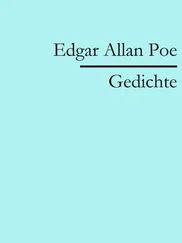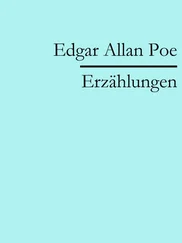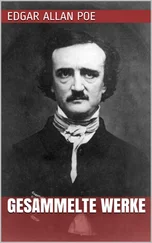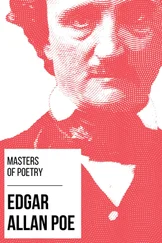4 1.4 The volumetric efficiency of the fuel injected marine engine in Table 1.2is 0.80 and the inlet manifold density is 50% greater than the standard atmospheric density of = 1.18 kg/. If the engine speed is 2600 rpm, what is the inlet air mass flowrate (kg/s)?
5 1.5 A 380 cc single‐cylinder, two‐stroke motorcycle engine is operating at 5500 rpm. The engine has a bore of 82 mm and a stroke of 72 mm. Performance testing gives a bmep = 6.81 bar, bsfc = 0.49 kg/kWh, and delivery ratio of 0.748. What is the fuel–air ratio, ? Assume standard atmospheric conditions of 298 K and 101.3 kPa.
6 1.6 A 3.8 L four‐stroke, four‐cylinder fuel‐injected automobile engine, with an equal bore and stroke and a compression ratio of 10:1, has a power output of 88 kW at 4000 rpm and volumetric efficiency of 0.85. The bsfc is 0.35 kg/kWh. (a) What is the bore and ? (b) If the fuel has a heat of combustion of 42,000 kJ/kg, what are the bmep, thermal efficiency, and air–fuel ratio, ? Assume standard atmospheric conditions of 298 K and 101.3 kPa.
7 1.7 A 4.0 L six‐cylinder automobile engine is operating at 3000 rpm. The engine has a compression ratio of 10:1, and volumetric efficiency of 0.85. If the bore and stroke are equal, (a) what is the stroke , (b) the mean piston speed , (c) the cylinder clearance volume , and (d) the inlet air mass flowrate ? Assume standard inlet air conditions of 298 K and 101.3 kPa.
8 1.8 A 10.0 L, eight‐cylinder square four‐stroke truck engine has a brake mean effective pressure of 11 bar, and operates at 2500 rpm with a volumetric efficiency of 0.85. Assume inlet air conditions of 298 K and 1 bar. (a) What is the total mass air flowrate into the engine, (b) the brake power produced by the engine, (c) the bore, and (d) the mean piston speed?
9 1.9 Chose an automotive, marine, or aviation engine of interest, and compute the engine's mean piston speed, bmep, and power/volume. Compare your calculated values with those presented in Table 1.1.
10 1.10 Compare the approximate, Equation ( 1.36), and exact, Equation ( 1.33), dimensionless cylinder volume versus crank angle profiles for mm, and mm. What is the maximum error, and at what crank angle does it occur?
11 1.11 Plot the nondimensional piston velocity, Equation ( 1.37), for an engine with a stroke mm and connecting rod length mm. What is the maximum velocity, and at what crank angle does it occur?
Chapter 2 Ideal Gas Engine Cycles
2.1 Introduction
Studying ideal gas engine cycles as simplified models of internal combustion engine processes is very useful for illustrating the important parameters influencing engine performance. Ideal gas engine cycle analysis treats the combustion process as an equivalent energy addition to an ideal gas. By modeling the combustion process as an energy addition, the analysis is simplified since the details of the physics and chemistry of combustion are not required. The various combustion processes are modeled either as constant volume, constant pressure, or finite energy release processes.
The internal combustion engine is not a heat engine, since it relies on internal combustion processes to produce work, and it is an open system with the working fluid flowing through the cylinder. However, gas engine models are useful for introducing the cycle parameters that are also used in more complex combustion cycle models, specifically the fuel–air cycle, to be introduced in Chapter 4. The fuel–air cycle accounts for the change in composition of the fuel–air mixture during the combustion process.
This chapter also provides a review of closed‐system and open‐system thermodynamics. This chapter first uses a first‐law closed‐system analysis to model the compression and expansion strokes and then incorporates open‐system control volume analysis of the intake and exhaust strokes. An important parameter in the open‐system analysis is the residual fraction of combustion gas,  , remaining in the cylinder at the end of the exhaust stroke.
, remaining in the cylinder at the end of the exhaust stroke.
Let us assume, to reduce the complexity of the mathematics, that the gas cycles analyzed in this chapter are modeled with an ideal gas that has a constant specific heat ratio  and gas constant
and gas constant  . This assumption results in simple analytical expressions for the efficiency as a function of the compression ratio. Chosen values of
. This assumption results in simple analytical expressions for the efficiency as a function of the compression ratio. Chosen values of  for internal combustion engine gas cycle calculations typically range between 1.2 and 1.4, and values of the gas constant
for internal combustion engine gas cycle calculations typically range between 1.2 and 1.4, and values of the gas constant  typically vary between 0.28 and 0.31 kJ/kg‐K. An unburned stoichiometric iso‐octane/air mixture at a compression temperature of 650 K has
typically vary between 0.28 and 0.31 kJ/kg‐K. An unburned stoichiometric iso‐octane/air mixture at a compression temperature of 650 K has  = 1.31 and
= 1.31 and  = 0.28 kJ/kg‐K, and after combustion at an expansion temperature of 2250 K the equilibrium combustion product mixture has
= 0.28 kJ/kg‐K, and after combustion at an expansion temperature of 2250 K the equilibrium combustion product mixture has  = 1.19 and
= 1.19 and  = 0.30 kJ/kg‐K.
= 0.30 kJ/kg‐K.
The scientific theory of heat engine cycles was first developed by Sadi Carnot (1796–1832), a French engineer, in 1824. His theory has two main axioms. The first axiom is that in order to to use a flow of energy to generate power, there needs to be two bodies at different temperatures, a hot body and a cold body. Work is extracted from the flow of energy from the hot to the cold body or reservoir. The second axiom is that there must be at no point a useless flow of energy, so heat transfer at a constant temperature is needed. Carnot developed an ideal heat engine cycle, which is reversible, i.e., if the balance of pressures is altered, the cycle of operation is reversed. The efficiency of this cycle, known as the Carnot cycle, is a function only of the reservoir temperatures, and the efficiency is increased as the temperature of the high temperature reservoir is increased. The Carnot cycle, since it is reversible, is the most efficient possible, and it is the standard to which all real engines are compared.
2.2 Gas Cycle Energy Addition
In performing an ideal gas cycle computation, the energy addition  (kJ) is required. There are a number of methods used to determine
(kJ) is required. There are a number of methods used to determine  , depending on what initial information is available. If
, depending on what initial information is available. If  , the energy addition per unit mass of fuel–air mixture (kJ/
, the energy addition per unit mass of fuel–air mixture (kJ/  ) is known, then
) is known, then
Читать дальше

 , remaining in the cylinder at the end of the exhaust stroke.
, remaining in the cylinder at the end of the exhaust stroke. and gas constant
and gas constant  . This assumption results in simple analytical expressions for the efficiency as a function of the compression ratio. Chosen values of
. This assumption results in simple analytical expressions for the efficiency as a function of the compression ratio. Chosen values of  for internal combustion engine gas cycle calculations typically range between 1.2 and 1.4, and values of the gas constant
for internal combustion engine gas cycle calculations typically range between 1.2 and 1.4, and values of the gas constant  typically vary between 0.28 and 0.31 kJ/kg‐K. An unburned stoichiometric iso‐octane/air mixture at a compression temperature of 650 K has
typically vary between 0.28 and 0.31 kJ/kg‐K. An unburned stoichiometric iso‐octane/air mixture at a compression temperature of 650 K has  = 1.31 and
= 1.31 and  = 0.28 kJ/kg‐K, and after combustion at an expansion temperature of 2250 K the equilibrium combustion product mixture has
= 0.28 kJ/kg‐K, and after combustion at an expansion temperature of 2250 K the equilibrium combustion product mixture has  = 1.19 and
= 1.19 and  = 0.30 kJ/kg‐K.
= 0.30 kJ/kg‐K. (kJ) is required. There are a number of methods used to determine
(kJ) is required. There are a number of methods used to determine  , depending on what initial information is available. If
, depending on what initial information is available. If  , the energy addition per unit mass of fuel–air mixture (kJ/
, the energy addition per unit mass of fuel–air mixture (kJ/  ) is known, then
) is known, then










